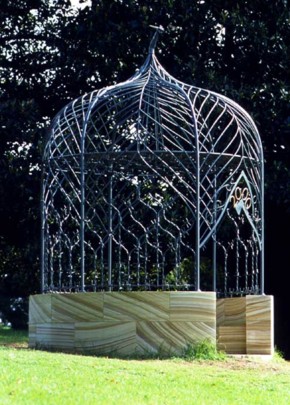The House
History changes according to the teller. Some time ago I took a free tour of Government House where a volunteer guide gave an idiosyncratic version of NSW history; Federation; Jack Lang; and the Constitution Australia. From my perspective nothing in this account was glaringly wrong but nothing was precisely right either. I can't imagine what the overseas visitors took away.
Having taken similar tours around overseas palaces the most striking thing for me about the House is its intrinsic modesty. You could fit the entire ground floor area into the grand ballroom of a typical European palace. It is far less grand than many private homes in England. It was built after abandoning the two, even more modest, Government Houses of the initial business-like governors, who were relatively junior working sailors and soldiers. In British terms the house is appropriate to accommodating a minor royal relative in the antipodes or military high achievers, past their child rearing age, as a modest retirement sinecure.
Initially the entire botanical gardens and the domain were set aside for the Governor's private use but in egalitarian NSW these private grounds were quickly drawn-in to the present much smaller area and the remainder made public. Today the Governor is treated like any other senior official and lives in her private home. The House shouts égalité from the very top of its modest staircase.
The contradiction with the actual importance and implicit status of the Governor is palpable. Had I been explaining the history to tourists I might have said, 'the Governor is the highest official in the State. New South Wales is similar in economic size and wealth to Switzerland and ranks in every physical and economic measure above Denmark, Norway and Finland. The Governor, in council with her ministers, is at the head of our government, appoints the judiciary and senior public servants and signs every act into law (the guide did mention this signing as a responsibility of the role). She can dismiss these ministers and parogue the Parliament; should the advice she receives from them be sufficiently inappropriate in her opinion; by convention after seeking qualified independent advice.'
At a similar point in his story our guide mentioned Jack Lang and linked his dismissal as Premier in 1932 to a refusal to pay for the Sydney Harbour Bridge. Two months prior to the dismissal the Bridge had been opened by Lang when he was temporally gazumped by Captain De Groot on his horse, who was incensed that it should instead be opened by the Governor on behalf of the King.
De Groot was dragged from his horse by irate police and taken to the notorious Darlinghurst reception centre, where he was unsuccessfully charged with a range of extreme offences; culminating in an attempt to have him declared insane.
With the collapse of these charges he was finally convicted of offensive behaviour and fined five pounds. He responded by serving a writ on the New South Wales police alleging wrongful arrest, securing an out of court settlement reported to have been 'a tidy sum'.

